1. Was.
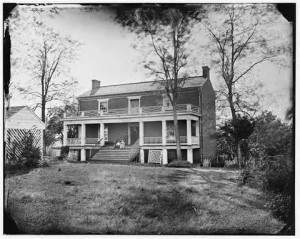 As fifties Georgia boys (and, after a move, Tar Heel boys), my running mates and I were furiously partisan, recruiting even the birds of the air to our Lost Cause. The aggressive, squawky jays we called “Yanks” for their colors and habits. Cardinals and mockingbirds we conscripted as “Confederates,” though we were much taken with the idea of calling ourselves “rebels.” We took our make-believe onto the scabby lawn and pine woods, corn rows and pastures; we ambushed hens, captured calves, taunted Federal hogs in their POW pen, generally co-opted the birds and beasts and weeds to our bellicose recreation, which we never saw as mere amusement. “Our folks” had been invaded and conquered, and we wanted to do better next time. As one of Lee’s “Miserables” (“a ragged private,” according to Shelby Foote) said after the surrender of the Army of Northern Virginia, “We’ll go home, make three more crops, and try them again.” As a Wolf grade Cub Scout, my sentiments exactly.
As fifties Georgia boys (and, after a move, Tar Heel boys), my running mates and I were furiously partisan, recruiting even the birds of the air to our Lost Cause. The aggressive, squawky jays we called “Yanks” for their colors and habits. Cardinals and mockingbirds we conscripted as “Confederates,” though we were much taken with the idea of calling ourselves “rebels.” We took our make-believe onto the scabby lawn and pine woods, corn rows and pastures; we ambushed hens, captured calves, taunted Federal hogs in their POW pen, generally co-opted the birds and beasts and weeds to our bellicose recreation, which we never saw as mere amusement. “Our folks” had been invaded and conquered, and we wanted to do better next time. As one of Lee’s “Miserables” (“a ragged private,” according to Shelby Foote) said after the surrender of the Army of Northern Virginia, “We’ll go home, make three more crops, and try them again.” As a Wolf grade Cub Scout, my sentiments exactly.
Our manual of conduct and rules of engagement came right out of Freeman’s revered biography of Lee, which resided in my grandfather’s barrister bookcase, the Pulitzer edition gold-leafed with scarlet fields for the words, featuring Lee’s profile on an embossed leather cover that hovered, depending on the light, somewhere between blue and gray, a phenomenon which remained a puzzlement to me. I didn’t understand much about the politics or the psychology of the narrative, but I could decipher the maps and maneuvers, shudder at the rowed-up corpses in ditches and bristle with pride at the noble faces of gentlemen generals posed for Brady’s cadre of photographers. Outside of books, there was a historical marker beside the railroad track on the east side of Griffin that proclaimed that site a way station for Union (or “Onion” to us) prisoners en route to prison camp, so we overturned logs, switched the ragweed and scraped the clay under the hottest sun whenever we could hitch a ride over there in somebody’s truck bed. We found scraps of metal and jerky-like leather, but nothing I could dignify with the term “artifact,” though I had a cousin who claimed to have dredged up half a canteen. The Singleterry brothers had a collection of minie balls, and a boy from church claimed to have on three separate occasions seen the downtown granite statue of a bearded Georgia volunteer stir on his pedestal in the moonlight. We believed what we needed to believe.
This was not an ornithological phase of my life. I loved the fact that chicken hawks and red-tails were common, bullet-quick hummingbirds unable to resist the althea, whip-poor-wills available for dusk serenade and doves purling from can’t-see to can’t-see. Flocks of yellow birds and red birds and blackbirds who even bore scarlet insignia on their wings were also abundant. Many seemed to maneuver in formations that could result only from rigorous drill. Except for the few skirmishes when we ambushed seed herds of Yanks, I didn’t much confuse the steady medley of birdsong and our higher calling – the rebel-yelling merciless vanquishment of phantom “mudsills” from up “No’th” – but I was young, indoctrinated, versed and rehearsed in the scriptures and talismans, the ceremonies and campaigns of the Civil War and all its supposed glory. The central role of subjugation, human-ownership, slave trading – that had no more reality to me than gossip, or a sentence in a picture book at school. Even when news of the Civil Rights movement filtered down to our level of awareness, it was enigmatic and seemed to be related to jobs more than voting. Since Griffin was a mill town, I translated civil movements of all stripes to labor discord and filed them away with the skill of a denial specialist. How all those people of color got to Georgia, I had only a hazy understanding, and my primary perception about them was that they swam among us, though in a different current, and seemed to invite the unearned censure of white adults in the same ways we boys did, providing a kind of common cause. I was seven, eight, then nine, “Dixie”-smitten, enchanted with occasions of “great pitch and moment.” And after all, the centennial celebration was just around the corner, and we were all bewitched with the predicted hoopla and hoorah in the offing – fireworks and re-enactments, flags, cannon, spurred horses and shelves upon shelves of new books, many aimed at pre-pubescent boys like me who needed heroes and lots of illustrations.
Manassas, Chickamauga, Chancellorsville, Fort Sumter (I’d been there!), Shiloh (there,  too), the Wilderness and Kennesaw Mountain (a frequent day-trip destination) – these were the legendary sites; as J.E.B. Stuart, Stonewall, Forrest, Belle Boyd, Pelham and Lee were the idols, and the talismans were Colt’s Navy, Parrot rifle, cavalry sash, regimental pennons, a lock of hair from some fictional Aura Lee. Needless to say, Appomattox was not part of our litany, nothing like a shrine. We saw it as the shameful location of the beginning of the end where the colors were struck and the cause was truly lost. I was more willing to visit Gettysburg and cross that wheat field where one ancestor went down, eager to see what Lee saw and strain to comprehend why he made his fatal mistakes, instead of wheeling around and marching his forces, which were perfectly situated between Meade’s Army of the Potomac and Lincoln’s inadequately protected kitchen and parlor and the office where he plotted with his henchmen. I was even happy to walk the rotunda of the Cyclorama in Atlanta, though the great circular mural and foreground manikins recorded the failed defense of that city, and the conflagration that followed. But I did not desire to see Appomattox Courthouse, where God’s apparent judgment was made official in a rainy April of 1865 (the cruel month when Fort Sumter’s Yankees had refused four years earlier to yield until they took hot shot and hell and lost their nerve, so that the first surrender lit the powder keg; also my birth month, a fact I thought auspicious).
too), the Wilderness and Kennesaw Mountain (a frequent day-trip destination) – these were the legendary sites; as J.E.B. Stuart, Stonewall, Forrest, Belle Boyd, Pelham and Lee were the idols, and the talismans were Colt’s Navy, Parrot rifle, cavalry sash, regimental pennons, a lock of hair from some fictional Aura Lee. Needless to say, Appomattox was not part of our litany, nothing like a shrine. We saw it as the shameful location of the beginning of the end where the colors were struck and the cause was truly lost. I was more willing to visit Gettysburg and cross that wheat field where one ancestor went down, eager to see what Lee saw and strain to comprehend why he made his fatal mistakes, instead of wheeling around and marching his forces, which were perfectly situated between Meade’s Army of the Potomac and Lincoln’s inadequately protected kitchen and parlor and the office where he plotted with his henchmen. I was even happy to walk the rotunda of the Cyclorama in Atlanta, though the great circular mural and foreground manikins recorded the failed defense of that city, and the conflagration that followed. But I did not desire to see Appomattox Courthouse, where God’s apparent judgment was made official in a rainy April of 1865 (the cruel month when Fort Sumter’s Yankees had refused four years earlier to yield until they took hot shot and hell and lost their nerve, so that the first surrender lit the powder keg; also my birth month, a fact I thought auspicious).
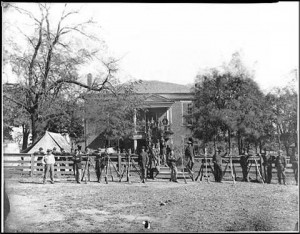 As I prepare to pilgrim down for my fourth, and likely last, visit to Appomattox, the nation is approaching the end of its four-year commemoration (few would likely say “memorial” now), and in the wake (or, God help us, the midst) of newly accelerated racial conflict and the 50-year celebration of the marches and speeches which so many hoped (hope still) would heal the rifts in our population, I find myself wanting to speak up for Appomattox as holy ground, despite the bloody scrimmages (Five Forks, Sailor’s Creek, High Bridge) that ensued en route as Grant’s divisions cut off every maneuver Lee could contrive to reach supply depots and rendezvous with (often phantom) ration trains. Wilmer McClean’s village and home was not just a charmed site where belligerents (many of them old comrades and classmates from the Point) shared calm and logic and agreed that the bloodshed should end; it was also a place of suffering and dying in the midst of a desperate running fight, and had not Grant’s terms been so generous and Lee’s foresight so astute, it might have been wound up in the annals as the venue of a massacre, so few, fatigued, ill-equipped and starved were Lee’s surviving followers.
As I prepare to pilgrim down for my fourth, and likely last, visit to Appomattox, the nation is approaching the end of its four-year commemoration (few would likely say “memorial” now), and in the wake (or, God help us, the midst) of newly accelerated racial conflict and the 50-year celebration of the marches and speeches which so many hoped (hope still) would heal the rifts in our population, I find myself wanting to speak up for Appomattox as holy ground, despite the bloody scrimmages (Five Forks, Sailor’s Creek, High Bridge) that ensued en route as Grant’s divisions cut off every maneuver Lee could contrive to reach supply depots and rendezvous with (often phantom) ration trains. Wilmer McClean’s village and home was not just a charmed site where belligerents (many of them old comrades and classmates from the Point) shared calm and logic and agreed that the bloodshed should end; it was also a place of suffering and dying in the midst of a desperate running fight, and had not Grant’s terms been so generous and Lee’s foresight so astute, it might have been wound up in the annals as the venue of a massacre, so few, fatigued, ill-equipped and starved were Lee’s surviving followers.
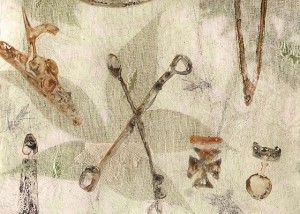 This morning the downhill, southern slope leading to the hay road is alive with birds – the wrens and chickadees, woodpeckers, finches, juncos, doves, a covey of jays, a brace of ruddocks. Hors de combat, they are here for the feeders’ black-oiled sunflower seeds, and the scabs of snow still on the ground remind them that plenty is no signal that foraging can be neglected. They will scuffle a little among themselves and flee the shadow of a predator, dispersing according to shrewd tactics I can never quite anticipate. But they seem to understand their shared interest and shared prosperity. They appear committed to a touchy truce.
This morning the downhill, southern slope leading to the hay road is alive with birds – the wrens and chickadees, woodpeckers, finches, juncos, doves, a covey of jays, a brace of ruddocks. Hors de combat, they are here for the feeders’ black-oiled sunflower seeds, and the scabs of snow still on the ground remind them that plenty is no signal that foraging can be neglected. They will scuffle a little among themselves and flee the shadow of a predator, dispersing according to shrewd tactics I can never quite anticipate. But they seem to understand their shared interest and shared prosperity. They appear committed to a touchy truce.
After the signing, again according to Foote, Grant had dismounted to compose a telegram to Lincoln, and artillery salutes were beginning “to roar from Union batteries roundabout, and he sent word to have them stopped,” in part because the blood of seasoned warriors might rekindle at the sound of the guns, but also because he saw it as inappropriate. “The war is over,” he told his staff. “‘The rebels are our countrymen again.’” This is one of the sentiments that summons my imagination and my body back to Appomattox. I spent my youth believing in the romantic narrative of the war, the States’ Rights mantra which usually neglected which particular right (to hold humans in bondage for profit, and worse) stood at the center of the discussion. Eventually, not even I could miss the historical reality, and I did a slow about-face, which some of my boyhood friends, and even adult friends, have seen as a betrayal of my place and people.
I wasn’t an easy convert, despite later readings of Freeman and books by Catton and Robertson. I had to shake off the spell of glamorous and sentimental Civil War art of Kunstler and his cohorts, movies like The Searchers, potboiler westerns and TV (the Maverick Brothers, most of the Rawhide drovers and many of Louis L’Amour’s protagonists are presented as paroled Texas Rebs, to confer underdog status), Henry Kyd Douglas (I Rode with Stonewall) and accounts of Mosby’s derring-do, family stories and community assumptions. All those resolute soldiers in stone guarding courthouse lawns. Even The Killer Angels, violent as it is between the hagiographic episodes, played a drum roll and a bugle anthem, but the counterforce was supplied by the grittier side of the large story. I read Nevins on the war’s causes, Grant’s and Sherman’s memoirs, Reid Mitchell’s Civil War Soldiers, Burke Davis, Bierce, Crane, Emory Thomas, Longstreet, Sam Watkins’ unforgettable Company Aytch, Mary Chesnut and Mary Vermilion, Warren’s Wilderness, Kantor’s Andersonville, Edmund Wilson’s Patriotic Gore. My history teachers were replaced by historians from either side of the Mason-Dixon Line, and accounts of the normal foot soldier’s travails (Webb Garrison’s Civil War Usage, John Billings’ Hardtack & Coffee: The Unwritten Story of Army Life). I had grown old enough and informed enough to know that Southern history and heritage are, among other things, tinged with the willingness to engage in rage and hate. Eventually, Ken Burns’ video documentary (created with appropriate imagination, thoroughness and respect) helped me to sort and organize my midden of facts, fictions and opinions, and it would be difficult to overstate the impact of three visits to the prisoner of war camp at Andersonville, Georgia, its grounds and visitor center as grim a museum as I have ever seen, despite the healthy population of mockingbirds and a trim chevron of geese that passed overhead on Christmas Day. Even Drew Gilpin Faust’s The Republic of Suffering: Death and the American Civil War has kept me focused on history, rather than distracted by entertainments in which Abe Lincoln cleaves Confederate vampires with a woodsman’s axe, while superheroes, zombies, wizards and celebrities stake their claim for our culture’s greater attention and reverence.
 These latter books bring to mind Suzanne Stryk’s Appomattox drawings of the scraps of materiel and spirit (spur and strap, buckle and utensil) excavated around the national park. It seems I have always had the war by jigsaw, but the brief view and touch of what has been buried or burned and unearthed is unnerving and more moving than display cases of spiffed-up up uniforms and oiled Enfields arranged with great aesthetic calculation. These bits have the power to arrest me, to remind me of the ways the war rent so much to splinter and fragment. They provide a powerful metonymy for the storm. And I can’t think of battlefields and Suzanne’s artifact renderings without picturing her miraculously painted birds, their shelters, skeletons, claws, feathers and eggshells. It’s likely too anthropomorphic to imagine birds having their own wars and armistices like so many partisan angels, but in this context I’m tempted, How quiet the woods around every battlefield must have been after the havoc of battle, how birdless and ravaged . . . until the vultures began their scavengers’ circles. I like to think that, since the little village now famous but so little revered was spared this stripping of vegetation (the photographs and drawings of the time show partly-fledged trees, the usual April display), it is a sanctuary, a true shiloh ( a Hebrew word for “place of peace). I’m trying not to be sentimental or inappropriate here, but the loss of the birds – frightened away, concussed or damaged by ball or fire – seems parallel, almost equally pitiful, to the loss of the men and women and children who suffered and died in the course of the war (and as scrutiny of our current conflicts is finally making clear, long after the war). Neither loss of life is easy to reconcile.
These latter books bring to mind Suzanne Stryk’s Appomattox drawings of the scraps of materiel and spirit (spur and strap, buckle and utensil) excavated around the national park. It seems I have always had the war by jigsaw, but the brief view and touch of what has been buried or burned and unearthed is unnerving and more moving than display cases of spiffed-up up uniforms and oiled Enfields arranged with great aesthetic calculation. These bits have the power to arrest me, to remind me of the ways the war rent so much to splinter and fragment. They provide a powerful metonymy for the storm. And I can’t think of battlefields and Suzanne’s artifact renderings without picturing her miraculously painted birds, their shelters, skeletons, claws, feathers and eggshells. It’s likely too anthropomorphic to imagine birds having their own wars and armistices like so many partisan angels, but in this context I’m tempted, How quiet the woods around every battlefield must have been after the havoc of battle, how birdless and ravaged . . . until the vultures began their scavengers’ circles. I like to think that, since the little village now famous but so little revered was spared this stripping of vegetation (the photographs and drawings of the time show partly-fledged trees, the usual April display), it is a sanctuary, a true shiloh ( a Hebrew word for “place of peace). I’m trying not to be sentimental or inappropriate here, but the loss of the birds – frightened away, concussed or damaged by ball or fire – seems parallel, almost equally pitiful, to the loss of the men and women and children who suffered and died in the course of the war (and as scrutiny of our current conflicts is finally making clear, long after the war). Neither loss of life is easy to reconcile.
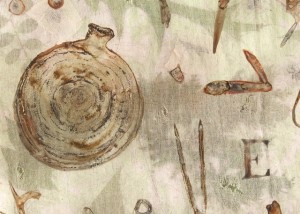 I live a few miles outside Lexington, Virginia, and work in the town that might be called the graveyard of the Confederacy. Lee’s remains and those of his family lie in the vault of the Lee Chapel. The legendary Traveler’s bones or some symbolic equivalent are reputed to lie under the grass on the Washington and Lee campus. Stonewall’s remains have long gone to dust in (of course) the Stonewall Jackson Memorial Cemetery, and his horse Little Sorrel’s actual bones were recently interred under the parade ground at nearby VMI, though his hide is grotesquely, if ingeniously, preserved in the Institute’s museum. One former Shenandoah office is across the street from the house where Jackson lived for a spell, and on conspicuous Civil War anniversaries the local cadre of Southern patriots who desperately want the Stars and Bars flying on municipal flagstaffs march and stand vigil about town in their odd mixture of replica uniforms and contemporary camouflage. Each of them carries some version of a Confederate flag, but none I’ve seen carry an American one. While they justify their reverence for the banners of the Lost Cause with the slogan “Heritage Not Hate,” their anger is as evident as their skewed sense of proportion in the question of heritage and history. Their “Forget Hell!” demonstrations, rallies, legal procedures and posturing for the media rile me just enough to understand that I probably need a renewed experience of Appomattox as much as they do.
I live a few miles outside Lexington, Virginia, and work in the town that might be called the graveyard of the Confederacy. Lee’s remains and those of his family lie in the vault of the Lee Chapel. The legendary Traveler’s bones or some symbolic equivalent are reputed to lie under the grass on the Washington and Lee campus. Stonewall’s remains have long gone to dust in (of course) the Stonewall Jackson Memorial Cemetery, and his horse Little Sorrel’s actual bones were recently interred under the parade ground at nearby VMI, though his hide is grotesquely, if ingeniously, preserved in the Institute’s museum. One former Shenandoah office is across the street from the house where Jackson lived for a spell, and on conspicuous Civil War anniversaries the local cadre of Southern patriots who desperately want the Stars and Bars flying on municipal flagstaffs march and stand vigil about town in their odd mixture of replica uniforms and contemporary camouflage. Each of them carries some version of a Confederate flag, but none I’ve seen carry an American one. While they justify their reverence for the banners of the Lost Cause with the slogan “Heritage Not Hate,” their anger is as evident as their skewed sense of proportion in the question of heritage and history. Their “Forget Hell!” demonstrations, rallies, legal procedures and posturing for the media rile me just enough to understand that I probably need a renewed experience of Appomattox as much as they do.
I don’t, at last, have even the slightest appetite for finding a CS button or Colt’s cylinder anywhere near the place where two weary and damaged armies agreed to cease hostilities and their leaders talked in quiet tones like gentlemen in a club. I do want to hear some birdsong and see some grace on the wing. I wouldn’t mind finding a feather in the new grass.
3. Ever More Shalt Be
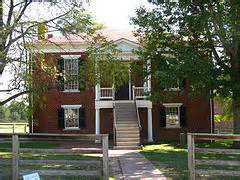 Images, both drawn and photographed at the time of the surrender, show a village spared the ravages of by war. The trees are only partly fledged, which is understandable for early April in southern Virginia (the surrender occurred on Palm Sunday). Four years, millions of casualties (both military and civilian), unfathomable damage to property and resources, a fierce and necessary shift in our notions of equality and fairness, deeds of valor and cowardice – all these aside for the moment. On those rainy and chilling mid-April days of Lee’s last series of engagements with his nemesis, combat-weary Americans were coming to the end of the country’s signature crisis and were about to turn our nation’s storied imagination and industry to mending and growth. I find myself eager to touch the ground and step into the parlor where the beginning of forgiveness became official. Though I know the conflicts that sparked the war persist, I’m hungry to celebrate the end of the fighting and the disputes, the residual animosities that find expression in the current retro-movements and choruses of “I Am a Good Old Rebel.” Somewhere in the basement I still have my boyhood flannel kepi with a cardboard visor, and my own 3’ X 3’ fringed Stars and Bars, which is undeniably an ingredient in our history, passed from my hands nearly half a century ago. People can carry these in their hearts for whatever reasons they have, but I prefer to see them in museums and National Parks, in books and films where they are not forced upon those whose legitimate horror and anger are activated by the images that seem to celebrate the only nation ever created specifically for the subjugation of a people.
Images, both drawn and photographed at the time of the surrender, show a village spared the ravages of by war. The trees are only partly fledged, which is understandable for early April in southern Virginia (the surrender occurred on Palm Sunday). Four years, millions of casualties (both military and civilian), unfathomable damage to property and resources, a fierce and necessary shift in our notions of equality and fairness, deeds of valor and cowardice – all these aside for the moment. On those rainy and chilling mid-April days of Lee’s last series of engagements with his nemesis, combat-weary Americans were coming to the end of the country’s signature crisis and were about to turn our nation’s storied imagination and industry to mending and growth. I find myself eager to touch the ground and step into the parlor where the beginning of forgiveness became official. Though I know the conflicts that sparked the war persist, I’m hungry to celebrate the end of the fighting and the disputes, the residual animosities that find expression in the current retro-movements and choruses of “I Am a Good Old Rebel.” Somewhere in the basement I still have my boyhood flannel kepi with a cardboard visor, and my own 3’ X 3’ fringed Stars and Bars, which is undeniably an ingredient in our history, passed from my hands nearly half a century ago. People can carry these in their hearts for whatever reasons they have, but I prefer to see them in museums and National Parks, in books and films where they are not forced upon those whose legitimate horror and anger are activated by the images that seem to celebrate the only nation ever created specifically for the subjugation of a people.
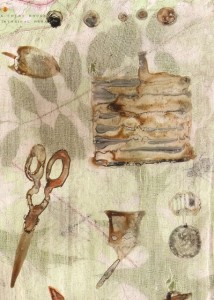 I hadn’t realized this essay would wind up as a plea for burying the hatchet even deeper, but now I see it was inevitable. American racial friction didn’t begin with Sumter or end at Appomattox (a word born of the misunderstood name of a sub-tribe of the Algonquin peoples), but the last official striking of the colors of the Confederacy occurred on November 10 as it was hauled down from the mast of a ship at sea: The Shenandoah. I hope there were gulls and gannets soaring by to witness and cry some version of amen.
I hadn’t realized this essay would wind up as a plea for burying the hatchet even deeper, but now I see it was inevitable. American racial friction didn’t begin with Sumter or end at Appomattox (a word born of the misunderstood name of a sub-tribe of the Algonquin peoples), but the last official striking of the colors of the Confederacy occurred on November 10 as it was hauled down from the mast of a ship at sea: The Shenandoah. I hope there were gulls and gannets soaring by to witness and cry some version of amen.
